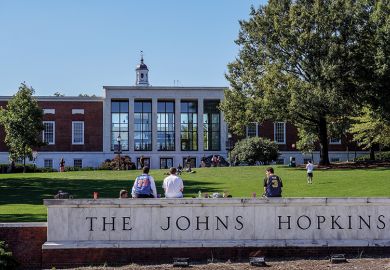Philanthropy has come of age in Australian higher education as universities harness their scale and focus on real-world outcomes to overcome the handicap of youth.
Administrators at the research-intensive Group of Eight universities say that altruism can help to fill the gap left by the predicted downturn of the country’s A$35 billion (£19 billion) international education industry, with fundraising hauls of A$100 million a year – unthinkable a few years ago – becoming routine.
The country’s two oldest institutions, the universities of Melbourne and Sydney, initiated the trend in 2013 with their “Believe” and “Inspired” campaigns, chasing targets of A$500 million and A$600 million, respectively. Both unveiled the initiatives when they had already half-achieved their goals, like buskers who inspire confidence by partially filling guitar cases with their own coins.
Within a few years, both universities had met their targets early and set revised goals of A$1 billion, with each claiming that it was rolling out the biggest philanthropic campaign in Australian history. Sydney announced that it had reached the milestone on 30 January.
In 2017, the University of Western Australia revealed that it had achieved the A$400 million target of its “New Century” campaign seven months ahead of deadline, with its fundraising bookended by two A$65 million donations from local mining magnate Andrew Forrest.
The same year, the University of Queensland announced its A$500 million “Not If, When” campaign, adding that the target had already been half-achieved since a 2013 “internal launch”. UNSW Sydney is expected to follow suit within the next 18 months, setting a higher figure.
The University of Adelaide declared that it would seek increased philanthropic support as part of a new strategic plan unveiled on 4 March. The Australian National University said that planning was “well under way” for a major fundraising campaign after the February recruitment of Barbara Miles, long-serving head of alumni engagement at the University of British Columbia.
In 2013, ANU pocketed a A$50 million donation from Australian entrepreneur Graham Tuckwell – then the largest individual gift ever to an Australian university – and it knocked back a potential A$60 million windfall last year when it rejected an agreement with the Ramsay Centre for Western Civilisation.
Non-Go8 universities have also benefited from philanthropic largesse. In 2009, Queensland University of Technology received A$25 million from the US philanthropist Chuck Feeney – part of more than A$500 million the duty-free shopping magnate reportedly doled out to Australian universities over many years.
Last year, La Trobe University received A$30 million from an anonymous donor – helping the Victorian institution to reach a A$50 million campaign goal and to set a new A$100 million target – with Southern Cross and Western Sydney universities obtaining individual donations of A$10 million each.
In October, Monash University launched its campaign – dubbed “Change it. For good” – having already amassed more than A$300 million of the A$500 million it aspires to raise by the end of 2022. It was also about halfway to achieving its targets of 50,000 donors and 200 new bequests.
Last year alone, Monash raised a record A$95 million – more than two and a half times the A$37 million that it netted in 2013, when chief philanthropy officer Marcus Ward joined Monash from a similar position at Queen’s University Belfast.
The 2018 contributions came from just over 6,000 donors, up from about 1,000 five years earlier. Monash collected A$46 million in eight “principal gifts” worth A$1 million or more each, up from three large donations totalling A$4 million in 2013. The number of individual benefactors giving at least A$100,000 had more than doubled to almost 50.
Mr Ward said that the universities of Sydney and Melbourne had unleashed a “sea change” in Australian philanthropy. “When they went public in 2013, no one anticipated that they would be not only hitting the A$100 million mark but hitting it regularly,” he said.
While universities such as Oxford and Harvard boast enormous endowments amassed over centuries, Mr Ward said that Australian universities had the attributes to “accelerate ahead” – including hundreds of thousands of alumni, many of them in Asia. “We’re able to go to those areas where you’re seeing significant increases in wealth, but also the changing demands of society in which philanthropy will need to play a part,” he explained.
Mr Ward said that although there had been a “backlash” against the huge central endowments of North American universities, Australian universities had avoided this by tying donations to specific research outcomes.
“Gone are the days when the vice-chancellor said, ‘These are my top three priorities’ – where the philanthropist handed over the cheque and said, ‘Do with this as you see fit.’”
Mr Ward knew of no British or Irish universities that, like Australian institutions, set targets for donors as well as donations. “We value the act of giving as much as the value of the gift,” he said.
POSTSCRIPT:
Print headline: “Sea change” brings a wave of generosity
Register to continue
Why register?
- Registration is free and only takes a moment
- Once registered, you can read 3 articles a month
- Sign up for our newsletter
Subscribe
Or subscribe for unlimited access to:
- Unlimited access to news, views, insights & reviews
- Digital editions
- Digital access to THE’s university and college rankings analysis
Already registered or a current subscriber?












